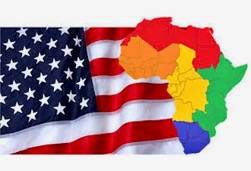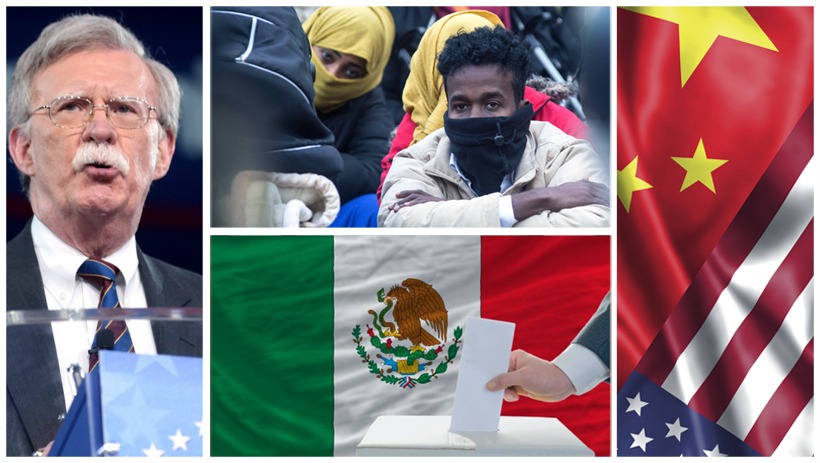It’s Something More Precocious.
It’s Something More Precocious.
By Mehmet Enes Beşer
In an increasingly bipolar global order—autocracy vs. democracy, West vs. East, United States vs. China—Vietnam doesn’t fit quite so well. Honed to high definition by the press into either China’s potential enemy in the South China Sea or, conversely, as a natural ally in socialist solidarity, Vietnam is neither. Hanoi-Beijing is an old and mature relationship based on wise calculation, strategic balancing that avoids ideological zealotry or blanket hostility. Vietnam is no friend of China, no enemy—it’s a country committed to strategic independence, playing a complex game of geopolitics on its own account. The appeal of projecting Vietnam as a counterbalance to China becomes increasingly seductive with the passing of time.
Western analysts, eager to sound regional “balance” against Chinese assertiveness, most often point to Vietnam’s modernization of its armed forces, presence in the South China Sea, and increasing economic interaction with the likes of the United States, Japan, and India. These are truths—but to interpret them as a move away from China or as indicators of competition is incorrect. Vietnam’s diplomatic policy is not aggressive. It relies on what its leadership calls “bamboo diplomacy”: moral, but flexible enough to curve before storms. In order to comprehend Vietnam’s position, one has to start with geography and history. The two nations have a blood-soaked, long border, as well as a legacy of conflict and cultural exchange.
The century-long dominance by China of Vietnamese politics, culture, and governance cannot be neglected, but only to the degree that Vietnam eschews to be dominated by—most recently in the war of 1979 on their border and maritime disputes now underway. This dualism—valuing nearness and closeness, and bitter suspicion of domineering move—is typical of Vietnam’s relation to China. The relationship economically is ambivalent as well. China is the largest trading partner of Vietnam, and Vietnam is among the most important export markets of China.
Vietnamese industry is based predominantly on Chinese imports, such as predominantly electronics, garment, and machines. However, it is not yet synchrony. Vietnam is proactively diversifying its supply chains and engaging in trade agreements like the Comprehensive and Progressive Agreement for Trans-Pacific Partnership (CPTPP), the EU–Vietnam Free Trade Agreement (EVFTA), and strategic economic partnerships with India and South Korea. These are not anti-China—these are pro-resilience. Vietnam is not seeking economic sovereignty through decoupling. Vietnam’s strategic role is even more exceptional. It has refused flatly to officially join any great power club, even while it strengthens defense relations with the US and joins regional security circles.
It keeps good relations with China, albeit while opposing Beijing’s expansive maritime claims. Furthermore, it is not one of confusion, but of conscious shunning of being lured into great power competition. Vietnam’s “Four No’s” policy of nonalignment—no military alliances, no foreign bases, no alignment against one country against another, and no use of force in international relations—is a paradigm of regional independence in a bipolar world. The policy is not a short-sighted one, which commits Vietnam to keeping its eyes closed to China’s regional behavior. Rather than being behind the pack criticizing Beijing’s moves in the South China Sea, it has been leading the charge.
It has invested in coast defense, pursued legal and diplomatic channels, and deepened maritime cooperation in sync with like-minded friends. But it still maintains diplomatic relationships with China, develops party-to-party relationships, and pursues development cooperation. Vietnamese policy towards China is deterrence without contempt, cooperation without servility. Vietnam’s response defies standard international headlines. It’s a stark reminder that not all middle powers need to take sides, or that all border states need to join or oppose. Vietnam’s response is less a balancing act against China than holding space—political, economic, and strategic—to make their own decisions. It is a subtle understanding of power asymmetries, cultural diplomacy, and regional politics. It is an exercise in patience and long-term thinking, difficult to be envied in the speed-of-light game of news cycles. The West, and America most of all, would be wise to listen. Compelling Vietnam to “choose” between Washington and Beijing risks undermining the sovereignty that makes it a desirable regional player. Vietnam will collaborate on common interests—supplies chain diversification, climate change adaptation, sea law—but not be a pawn in larger geopolitics. Attempts to turn it into an anti-China bulwark are based on misunderstanding its history and its intentions.
Conclusion
The Vietnamese-Chinese relationship cannot be fit into the partnership/rivalry boxes. It is a delicate, dynamic, and highly strategic relationship in the context of proximity, realism, and fierce defense of sovereignty. Vietnam does not want war with Beijing, nor blind obedience. It plays its own script, as per history, driven by national interest, and propelled by cautious but insistent diplomacy.
Where there are many states between China’s gravitational pull and the United States’, Vietnam teaches us the following: how a middle power can stand up at the same time and diversify the alliance without either of them becoming strategic duos. Where in the Indo-Pacific global competition is fought, countries like Vietnam teach us the following: there is sovereignty—its strength benefits.
To see Vietnam as just China’s enemy or ally is to be blind. Vietnam is a center of gravity unto itself. And in today’s world, fractured and dispersed, that can be the most strategic place of all.

















Leave a Reply